The 2017 Beyond Energy Efficiency Conference hosted by Build It Green was an inspirational success, well attended by over 250 attendees including 43 speakers and 13 exhibitors. It took place at the Zero Net Energy Center in San Leandro, California, a training center for electrical apprentices from IBEW Local 595 and NECA, and the first existing commercial building in the US that meets the US Department of Energy’s Zero Net Energy requirements.

The morning was kicked off with welcoming remarks from Karin Burns, Build It Green’s Executive Director, Mayor Pauline Cutter of San Leandro, and a lighthearted yet substantial keynote by Commissioner Andrew McAllister of the California Energy Commission (CEC). While there were only two workshop time slots, there were fourteen sessions each with its own enticing topic that ranged from policy and building code updates, to health and indoor quality, low carbon homes, and marketing and selling. I attended the sessions Zero Energy, Step by Step and ZNE New Homes: Industry Standard vs. New Affordable Approaches, both of which could have been extended to whole-day sessions. The conference ended with a Builder Panel Roundtable that featured builders who are building Zero Net Energy homes ranging from affordable housing to single family production homes and high end single family homes.

Here are my take-aways from each session.
Keynote
Speaker: Commissioner Andrew McAllister
- California leads the way in providing creative policies and planning for all things related to energy. The California Energy Commission is the largest energy commission in the U.S. and has signed an Energy Memorandum of Understanding with about 130 entities including the US Navy and many countries. By providing guidance and technical know-how, CEC helps others to replicate green projects and scale them up.
- California Assembly Bill 802 mandates the establishment of a new statewide building energy use benchmarking and public disclosure program and requires utilities to provide energy consumption data for covered buildings to building owners. By the middle of 2018, building energy use benchmarking will be required for commercial and multi-family projects equal or greater than 50,000 square feet.
- The CEC’s goal is to make sure that policies are in place to support the technologies and ideas, then ensure that there is a value proposition and marketplace to support them. But most importantly, with partnerships and teams, we need to fight for our message and remember that we still have long way to go.
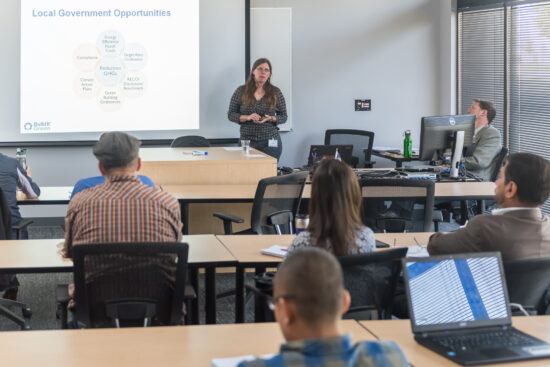
Workshop: From Envelope to Occupancy: Zero Energy, Step by Step
Speakers: Katy Hollbacher, Jennifer Love, and Dan Johnson of Beyond Efficiency and Steve Buttitta of NorCal Green Building Consulting
The Workshop focused on an effective process for achieving ZNE projects.
- Step 1. Visions, Goals, and Education: Clarify and understand the motivation of the client and his/her Zero Net Energy goals and definition. Make sure that the entire project team is on board. Arrange for an intensive kickoff training, establish minimum baseline knowledge of high performance strategies, and continuing education is ongoing throughout project.
- Step 2. Basis of Design: This is required only for non-residential projects but very useful for all types of projects. A Basis of Design (BOD) describes design assumptions and technical approaches, and may go through many iterations. A BOD can help support the client’s goals, encourage team collaboration, and keep the project on track.
- Step 3. Analysis and Iteration: Complete the energy budget analysis which may go through many iterations.
- Step 4. Implementation / Building: The construction kickoff meeting needs to get the right people in the room and include all the key players including the site supervisor. Review and revisit throughout the project: project goals and certification, any special construction considerations, performance requirements, roles and responsibilities, and continuing training.
- Step 5. Feedback: Monitor and track energy usage and follow up with building occupants if there are any discrepancies between assumptions and actual usage.
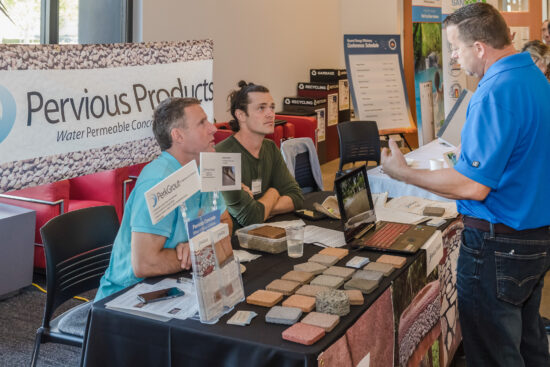
Workshop: ZNE New Homes: Industry Standard vs. New Affordable Approaches
Speakers: Rick Chitwood of Chitwood Energy Management and Ann Edminster of Design AVEnues LLC
- Basic Ingredients of a ZNE Project: efficient form and orientation; correctly sized mechanical equipment; quality installation; high performance enclosure; best-in-class plug loads; and renewable energy.
- Emerging Components of ZNE Homes: performance dashboards, electric vehicles, and battery storage.
- Performance vs. Expectations of Energy Features: often times, a client’s actual energy usage will exceed the energy modeling performance, thus it is critical to monitor and track energy usage post-occupancy to determine what are the discrepancies.
- Important Affordable Energy Measures That Perform Well: integrated project design and delivery; minimal framing lumber and headers to minimize thermal bridging; affordable windows with a ventilation system; insulation with low air leakage that perform well; very small HVAC systems that deliver comfort (most systems are over-sized!); installer performance testing; and continuous tracking of utility bills over time.
- Mr. Chitwood truly believes that furnaces should never be used in California homes because they are just too big. He also believes that only ducted mini-split heat pump systems small enough to fit in small spaces should be used.
- Integrated Design and Delivery: buildings perform best when systems and components are integrated well but effective building integration happens only if the project team is also integrated.

Builder Panel Roundtable Moderated by Bruce Mast, Build It Green’s Deputy Executive Director.
Panelist: Amy Dryden, Director, Policy and Technical Innovation, Build It Green.
- California has three separate energy goals: AB 32 (The California Global Warming Solutions Act of 2006 requires the state to reduce its GHG emissions to 1990 levels by 2020.); California’s Long Term Energy Efficiency Strategic Plan (This is a framework of goals and strategies for saving energy, covering government, utility and private sector actions.); and the California Climate Change Scoping Plan (This describes the approach that California will take to reduce the GHGs.).
- Build It Green is engaged in all things energy related at the policy level and is trying to develop tools to support the achievement of the energy goals.
Panelist: Brandon De Young, Executive Vice President of De Young Properties, President of De Young Mortgage.
- De Young Properties is a third generation production home builder since post-World War II in Central San Joaquin Valley, California and considers themselves a leader in building high performance / smart, high-tech homes that average 1500 – 3000 square feet.
- The company started in 2008-2009 to build GreenPoint rated houses that significantly exceed Title 24 and by 2010, exceed Title 24 by 30%.
- In 2013, the company partnered with PG&E to develop and build the first ZNE concept home in San Joaquin. After much refinement in figuring out how to build it efficiently and make it affordable, they recently completed the second ZNE home.
- Currently they are working on the first ZNE community in San Joaquin.

Panelist: Bryan Dove, Director of Asset Management of Mutual Housing California.
- Mutual Housing California is an affordable housing developer in the Sacramento area of California.
- Its 62-unit Spring Lake in Woodlands, California is the first nationally certified zero net energy rental housing in the US. It is also Energy Star rated, LEED Platinum certified, GreenPoint rated, and a US Department of Energy Zero Energy Ready Home Housing Innovation 2015 winner.
- The rental property provides housing, supportive services, and community building programs for agricultural workers.
- The property has been running for two years but it hasn’t met its ZNE goals yet because tenant electricity usage exceeds the modeled performance. Mutual Housing California is making a big push this year to help residents better interpret their utility bills and make behavioral changes.
Panelist: Scott O’Hara, Owner & Founder of Scott O’Hara Construction, Inc.
- Scott O’Hara Construction, Inc. builds ZNE homes in the Oakland Hills of California. Its goal is to build ZNE homes with quality construction, standard materials, and good design.
- Key parameters for design and construction: make sure that the site is conducive to designing ZNE, good mechanical design, and careful attention to installation and commissioning.
- Most importantly, they work with the buyers of their houses post-occupancy to monitor the property’s electricity usage to obtain feedback. Commissioning plus the installation of data loggers throughout the house help monitor the house’s environmental conditions.
- The company provides the buyers of their homes a zero energy bill guarantee for three years and will pay the utility bill if there is overage during the first three years of operation.
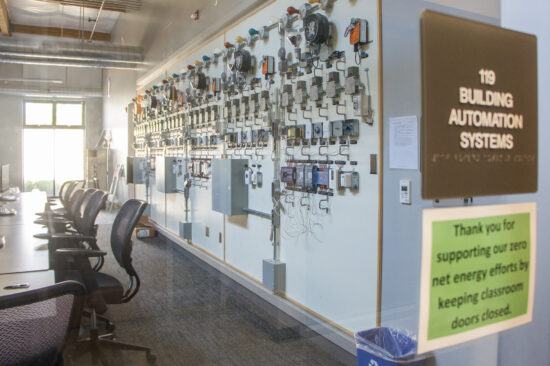
The 2017 Beyond Energy Efficiency Conference had a well rounded agenda that had provided something for everyone – architects, engineers, contractors, consultants, government agency representatives and concerned citizens. For me, a focus on sessions related to design and project management gave me a re-charge and allowed me to learn what others are doing. In between sessions, I enjoyed re-connecting with colleagues and learning about new green products at the Expo. At the end of the day, I was reminded of my critical role in contributing to good design and energy efficiencies in buildings and beyond, and continuing in fighting for our message. Thank you Build It Green and its staff for hosting this fantastic event.


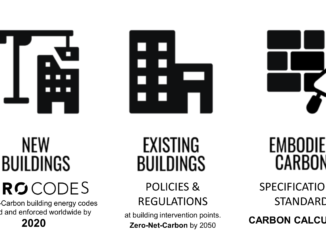
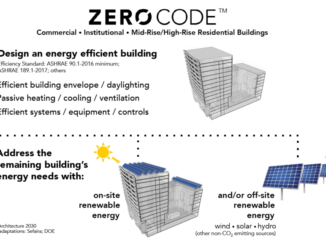
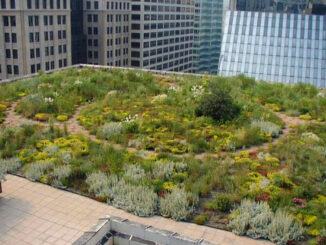
Be the first to comment